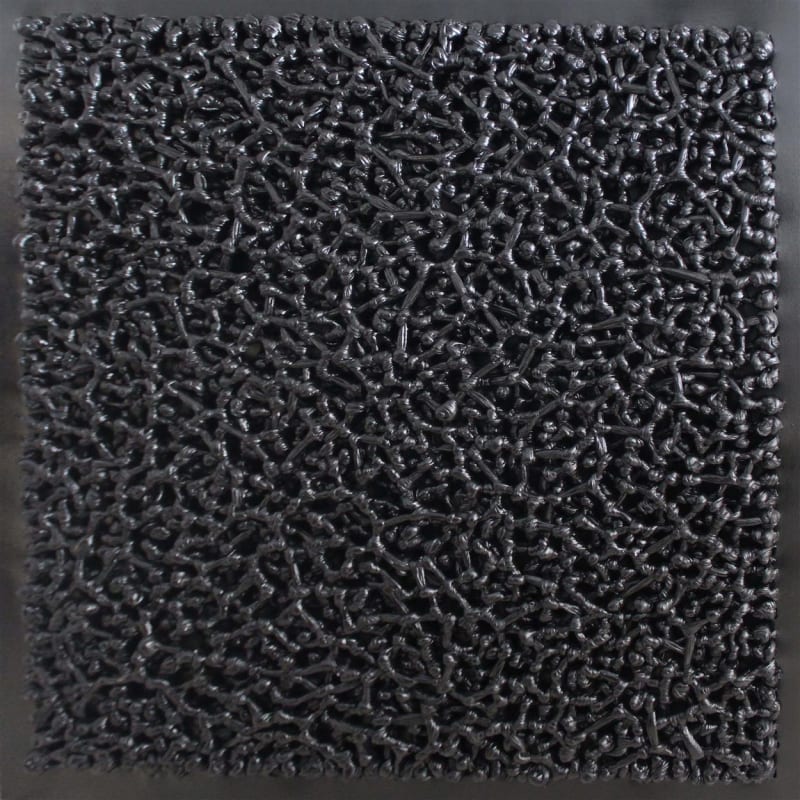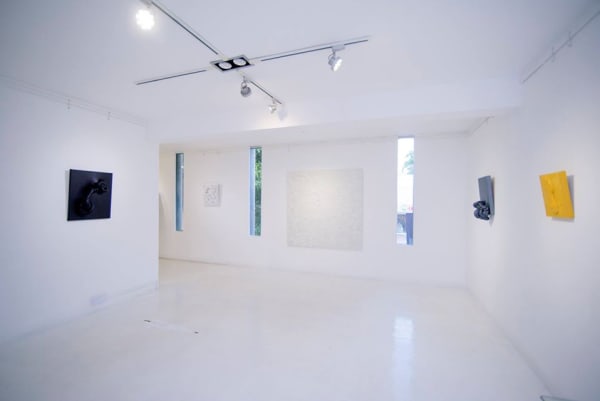Stories Within : Mahen Perera
Mahen Perera’s paintings-as sculpture-as-paintings contain subtle yet sustained moments of untheatrical anarchy. His works are dramatic, but they do not function on the same wave-length as a tragic life event that suddenly destabilizes ones guiding constants and frameworks. Although there is destabilization, Mahen’s works are quieter: like a passing comment or question dropped by a friend that stays with you; plagues you, while quietly contributing to a changing view of the world. In other words, a moment to look back and question, re-evaluate while looking forward to discovering and learning.
Mahen Perera trained in Multi-Disciplinary Design at the National Design Centre in Colombo before going on to pursue his BA in Fine Arts from the Lasalle College of the Arts in Singapore in affiliation with the Open University U.K., Many of the objects and materials featured in the artist’s works are discarded things he comes across on long walks around Colombo. For Mahen, walking sometimes aimlessly is a way of “confronting and considering the world and [himself] inside of it”. When something grabs his attention, he picks it up and takes it back to his studio. There it sits, spit out by a labyrinth of human systems: its history now salvaged. When pushed, Mahen cannot articulate the process he uses to decide what objects and materials he picks, he dismisses the question. There’s no process, he says, “I just find these objects really interesting, others might not.” It so begs the question of: what deems these objects worthy of salvage and consideration?
Mahen’s works feature knotted fabric, protruding from the canvas drenched in layers of paint. As a finished product, they cease to be their previous selves; their mono-history intersecting with two other histories. Although the objects cannot speak, it is in the convergence of these histories that Mahen Perera’s works traverse their way into a connection with the individual. After Mahen knots, stretches, soaks, covers and changes these materials, a third history comes into play; the history of the viewer. The viewer is confronted with important questions that include, what is the history of this object? How did it come to be hear in this moment? Perhaps these questions may reveal less about the object in front of them and more about the world itself?
The triangle of histories reflected in the final pieces inspires a chaotic back and forth with polysemantic possibilities; they conjure up familiar associations. The protrusions feel corporeal, reminding one of their own body in a sinewy violent act of stretching and tearing, opening spaces for transmutation. Suddenly with equal force and form they are unrecognizable and unfamiliar. They are artificial, alien, and plastic movements: both belonging to the body and outside of it. They feel at once psychological and lively but also resolute and peaceful. It is an exercise in training the eye to see without certainty, after certainty. To accept contradiction and complexity as a visual reality, but perhaps more importantly, a lived reality.
Mahen’s works have thrown a wedge into the ordinarily lived world, creating moments of reflection through anarchy, precisely because of the contradictory nature of being both recognizable and unfamiliar at once. Anarchy, because of its newness and disorder, due to absence or non-recognition of authority or category. The works usurp the authorities that industrialize our lives; that fuel our systems and contribute to our mechanization. Reflection, because in his works, the newness gives us a place to rest, and experience something unknown and unanswerable as a means of re-evaluating the known. It is in the cultivating of these moments of reflective anarchy that Mahen’s painting are not particularly political, but they can be. They are not decorative, but they can be. Perera has created new matter that lives in a permanently contradictory state and thus inserts itself as a kind of surprise interrupting daily human activity. Formally, these works are an unfamiliar combination of admiration and fear for the world of objects; this is because they tell us infinite stories of ourselves and what we discard. They become objects of passive surveillance. We do not have access to the data but we recognize them as monuments of their existence and thereby evidence of our own.
Mahen Perera’s works have been exhibited in Sri Lanka, Singapore and Vietnam.
Fillmore, C J; Atkins, B T S (2000). “Describing polysemy: The case of “crawl””. In Ravin, Y; Leacock, C. Polysemy: Theoretical and computational approaches. Oxford: Oxford University Press. pp. 91–110., p.100.








